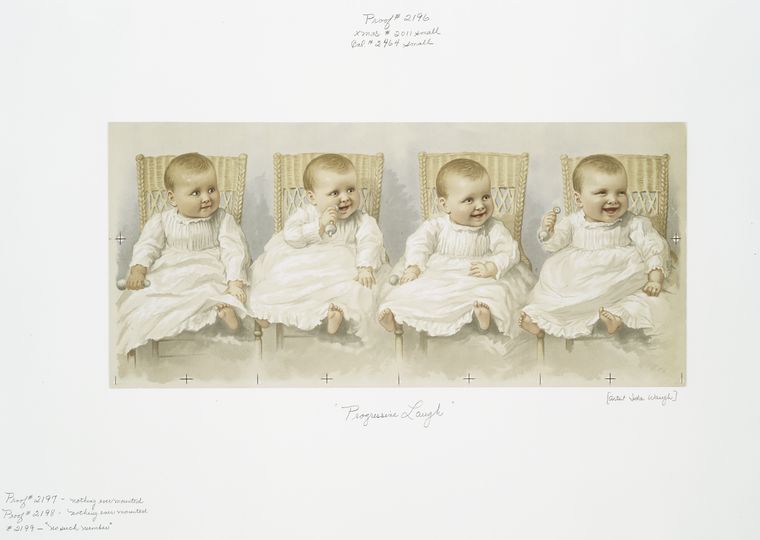Teach This Poem is a weekly series featuring a poem from our online poetry collection, accompanied by interdisciplinary resources and activities designed to help K-12 teachers quickly and easily bring poetry into the classroom.
Featured Poem
Progressive Laugh

The Miriam and Ira D. Wallach Division of Art, Prints and Photographs: Print Collection, The New York Public Library. "Progressive Laugh [Christmas card and calendar depicting baby with four expressions]." New York Public Library Digital Collections.
Classroom Activities
- Warm-up: Quickly go around the room and ask each of your students to smile as if they are about to laugh, and then as if they are laughing, without making a sound. Any student who wants to wait should say “pass,” and you can return to them when all the other students have had a turn.
- Project an image of Progressive Laugh [Christmas card and calendar depicting baby with four expressions] in front of the class. Give your students a long time to look at it and ask them to write down what they notice, paying particular attention to the specific details they see—eye shapes, mouth shapes, etc. They need to write more than “I see a baby about to laugh.”
- Ask your students to turn and share what they noticed in the image with a partner. What details tell them what the baby is doing? Would they think the same thing if there were only one photo in the image? Why? How does the image make them feel?
- Project the poem “The Laughing Child” in front of the class and ask your students to read it twice silently. The first time, they should simply read the poem through. The second time, they should write down the words and phrases that jump out at them.
- Ask one student to read the poem aloud to the class. Ask the listening students to add any new words and phrases that jump out at them to their lists. Repeat this process a second time, with another student reading the poem aloud.
- Ask your students to gather in small groups to share what they noticed from both the silent and aural readings. Using evidence from what they noticed, why do they think the laughing child is important to the she referred to in the poem?
- Whole-class discussion: Why is the thought of the laughing child important to the speaker in the poem? Again, ask them to use evidence from what they noticed in the silent and aural readings.
